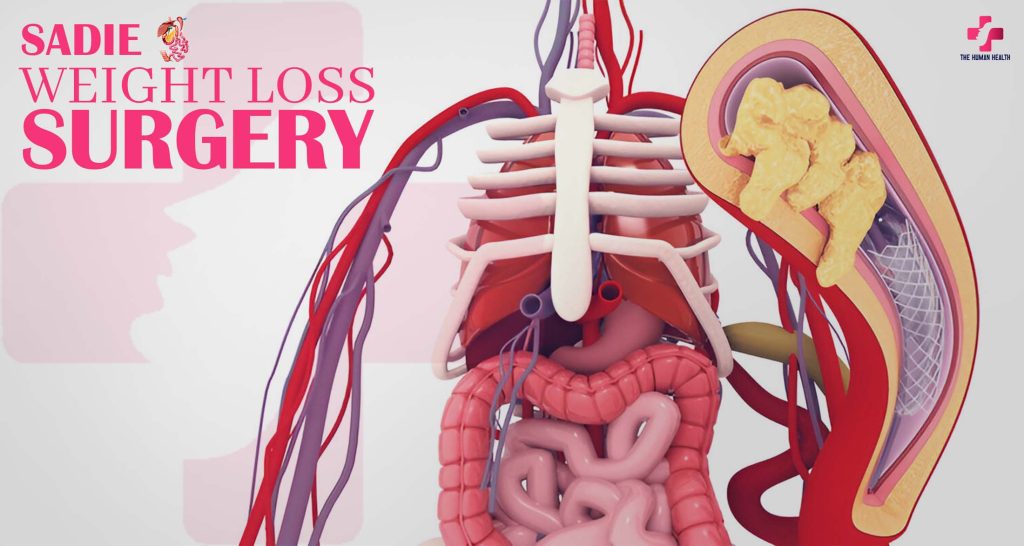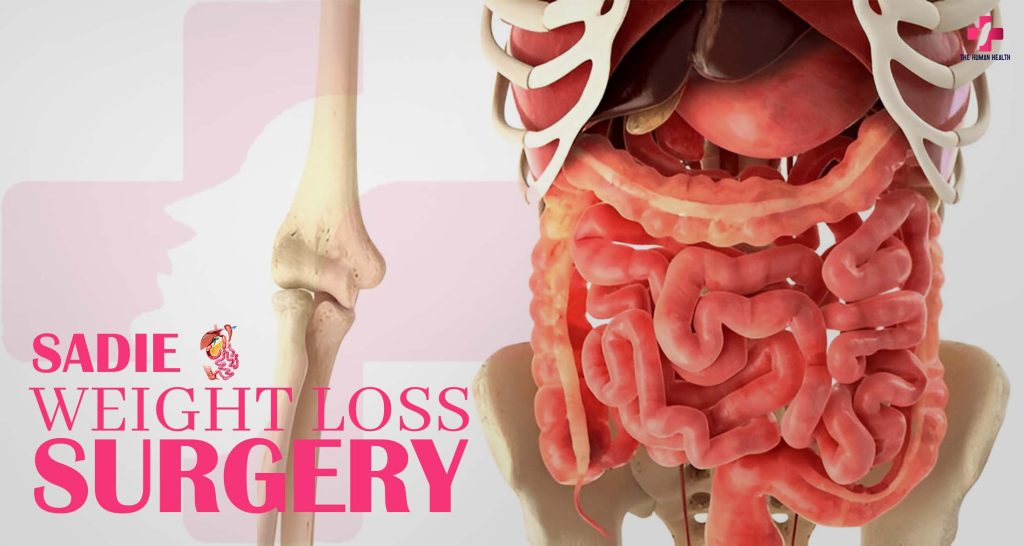Sadie Weight Loss Surgery: A Complete Guide to the SADI-S Procedure
Losing weight is tough. Diets fail. Workouts don’t always help. If you feel stuck, Sadie weight loss surgery (SADI-S) could be an option. This procedure helps you shed pounds by changing how your body absorbs food. It’s simpler than
the gastric reduction duodenal switch but just as effective. In this guide, we’ll cover how it works, what to expect, and if SADI surgery is right for you. Let’s get started!
What is Sadie Weight Loss Surgery (SADI-S)?
Ever wondered what Sadie weight loss surgery is? Let’s keep it simple. SADI-S (Single Anastomosis Duodenal-Ileal Bypass with Sleeve Gastrectomy) is a type of weight loss surgery. It shrinks your stomach and changes how your body absorbs food. This helps you lose weight faster.
It’s a mix of two well-known surgeries: the gastric sleeve and a modified duodenal switch. But here’s the difference—SADI-S is easier on the body than the gastric reduction duodenal switch (DS) because it skips one of the intestinal connections. Compared to the gastric sleeve, it leads to more weight loss. And unlike gastric bypass, it has a lower risk of dumping syndrome.
Doctors created SADI-S as a simpler and safer option. It’s not as common as other weight loss surgeries, but more people are choosing it. Research shows it works well for long-term weight loss.
How Does the SADI-S Procedure Work?
So, how does Sadie weight loss surgery actually work? Let’s break it down step by step.
First, the surgeon removes about 80% of your stomach, just like in a gastric sleeve. This limits how much food you can eat and helps control hunger.
Next comes the switch surgery part. Instead of rerouting multiple sections of the intestine like in a gastric reduction duodenal switch (DS), SADI-S connects the stomach to a single point in the small intestine. This change lowers calorie absorption but keeps digestion running smoothly.
The length of the normal SADI channel (the part of the intestine where food moves through) affects how much weight you lose. A shorter channel means fewer calories absorbed, but it also increases the risk of nutrient deficiencies. Doctors adjust this based on what’s best for you.
Overall, the SADI-S procedure helps with weight loss by reducing hunger, limiting food intake, and cutting down calorie absorption—all while keeping digestion more natural than a gastric bypass.

Is SADI-S Surgery Right for You?
Thinking about Sadie weight loss surgery but not sure if it’s for you? Let’s keep it simple.
Who Can Get SADI-S?
Doctors recommend SADI-S surgery for people with a BMI of 35 or more, especially if they have diabetes, high blood pressure, or sleep apnea. It’s also an option if you had a gastric sleeve but need more weight loss. Your doctor will check if this SADI bariatric procedure is safe for you.
SADI-S vs. Gastric Sleeve vs. Bypass
How does SADI-S compare to other weight loss surgeries?
- SADI-S vs. gastric sleeve – The gastric sleeve makes your stomach smaller, but your body still absorbs food the same way. SADI-S does both, so people usually lose more weight.
- SADI-S vs. bypass – Gastric bypass changes the way food moves through your body, which can cause dumping syndrome (a sugar crash). SADI-S has a lower risk of this.
Which Surgery is Best?
It depends on your goals. If you want moderate weight loss with fewer risks, a gastric sleeve might be the way to go. If you need more weight loss but want to avoid some of the risks of a bypass, SADI-S weight loss surgery could be a better fit. Your doctor can help you decide.
Pros and Cons of SADI-S Surgery
Thinking about Sadie weight loss surgery? It has big benefits, but there are some downsides too. Let’s break it down.
✅ Pros of SADI-S Surgery
1. Big Weight Loss
Wondering, “How much weight can you lose with SADI?” A lot! Most people lose 70-80% of their extra weight in two years. That’s more than with a gastric sleeve. Since SADI surgery changes both your stomach size and food absorption, weight loss lasts longer.
2. Less Risk of Dumping Syndrome
Gastric bypass can cause dumping syndrome—a sudden, awful sugar crash. The SADI-S procedure lowers this risk. You can eat more foods without worrying as much about sudden sugar drops.
3. Fewer Complications Than Traditional Duodenal Switch
The gastric reduction duodenal switch (DS) is effective but riskier. SADI-S weight loss surgery skips one extra step, making it simpler and safer. Fewer risks mean a smoother recovery.
❌ Cons of SADI-S Surgery
1. Can You Gain Weight After SADI Surgery?
Yes, but it’s less likely than with a gastric sleeve. Some people regain weight over time, especially if they don’t follow a healthy diet. SADI bariatric surgery works best with good habits.
2. Vitamin and Nutrient Deficiencies
Since switch surgery changes how your body absorbs food, you’ll need daily vitamins. If you don’t take them, you could lack iron, calcium, vitamin D, or B12.
3. Risk of Bile Reflux
Some SADI weight loss surgery reviews mention bile reflux. This can feel like acid reflux. It’s not super common, but it’s something to watch for.
Final Thoughts
Every weight loss surgery has good and bad sides. The Sadie weight loss method works well and has fewer risks than some other options. But it’s not for everyone. If you’re asking, “Which gastric surgery is best?”, talk to your doctor to see what fits your goals.
SADI-S Surgery vs. Other Weight Loss Procedures
Picking the right weight loss surgery can feel confusing. There are many options—gastric sleeve, bypass, duodenal switch, and SADI-S. If you’re asking, “Which gastric surgery is best?”, let’s break it down.

Is SADI-S Better Than Gastric Sleeve?
Both SADI-S weight loss surgery and the gastric sleeve shrink your stomach. But they don’t work the same way.
- Gastric sleeve only makes your stomach smaller. Your body still absorbs all calories.
- SADI surgery makes your stomach smaller and lowers calorie absorption. This helps you lose more weight than a gastric sleeve.
If you only need to lose some weight, a gastric sleeve may be enough. But if you want to lose more and keep it off, Sadie weight loss surgery could be a better fit.
Why Is Bypass Surgery Avoided? (Pros and Cons of Gastric Bypass)
Gastric bypass is common, but it’s not for everyone.
✅ Pros:
- Helps with fast weight loss
- Can improve diabetes and other health issues
❌ Cons:
- Dumping syndrome (sudden nausea, sweating, and weakness after eating sugar)
- More digestive issues than SADI-S
- Longer recovery time
Many people pick SADI-S over bypass because it has fewer side effects but still works well.
What Is the Fastest Weight Loss Procedure?
If you want to lose weight fast, duodenal switch (DS) and SADI-S are top choices.
- Gastric sleeve – Works, but weight loss is slower.
- Gastric bypass – Faster than a sleeve, but can cause dumping syndrome.
- SADI-S – Helps with rapid weight loss and has fewer side effects than bypass or full duodenal switch surgery.
Most people lose 70-80% of extra weight with SADI bariatric surgery in about two years. That’s faster than a sleeve and easier than bypass.
What Is the Safest Weight Loss Surgery?
The safest surgery depends on your health and goals.
- Gastric sleeve – Least risky, but weight loss is slower.
- SADI-S weight loss surgery – More weight loss with fewer risks than duodenal switch.
- Gastric bypass – Works well, but has more side effects.
If you want a safe, effective option, Sadie weight loss surgery could be the best choice. It’s safer than duodenal switch but gets better results than a sleeve.
Final Thoughts
Each surgery has pros and cons. If you need big weight loss but want lower risks, SADI-S might be just right.Still not sure? Talk to a bariatric surgeon to see what’s best for you!
Recovery After SADI-S Surgery
You did it! You took a big step with Sadie weight loss surgery (SADI-S). Now, let’s talk about what comes next—recovery. What should you expect? How long will it take to feel like yourself again? Let’s break it down.
How Long Is SADI Surgery?
SADI surgery takes about 2 to 3 hours. You’ll be asleep the whole time, so it’ll feel like seconds. After surgery, most people stay in the hospital for one to three days.
Will it hurt? A little, but not too bad. It might feel like you did way too many sit-ups. The good news? Pain meds help, and most soreness fades in a few days.
What’s The Recovery Timeline?
Here’s a simple look at your recovery journey:
- Week 1: You’ll start with a liquid diet—broth, protein shakes, and Jell-O. Moving around helps, so take short walks.
- Weeks 2-4: You can eat soft foods like mashed potatoes and yogurt. Your energy will improve!
- 1-3 Months: Time to add solid foods back in. You’ll notice weight loss kicking in!
- 6 Months & Beyond: Most people lose 70-80% of their extra weight within two years after SADI-S surgery.
What Do People Say About Recovery?
Many people say the first week is the hardest, but it gets easier. One person shared, “The first days were rough, but by month two, I had so much more energy. No regrets!” Another said, “I worried I’d gain weight after SADI surgery, but my doctor helped me stay on track.”
Final Thoughts
Healing takes time, but every day gets easier. Follow your doctor’s advice, stay active, and celebrate small wins. One day, you’ll look back and think, “Wow, I did that!” And you know what? You totally did.
How Much Does SADI-S Surgery Cost?
Let’s talk money. Sadie weight loss surgery (SADI-S) isn’t cheap, but for many, it’s worth every penny.
The Price Tag
On average, SADI-S weight loss surgery costs $15,000 to $25,000 in the U.S. Some clinics charge less, while top hospitals may ask for more.
What affects the cost?
✔️ Surgeon’s experience – Skilled doctors charge more, but better results matter.
✔️ Hospital fees – Prices change based on location and services.
✔️ Pre-surgery tests – Bloodwork and imaging add extra costs.
✔️ Post-op care – Medications, follow-ups, and vitamins add up.
Will Insurance Pay for It?
Some insurance plans cover SADI-S surgery, but only if it’s medically necessary. You might qualify if:
✔️ Your BMI is 35+, or you have health issues like diabetes.
✔️ You’ve tried dieting and exercise but haven’t lost enough weight.
✔️ Your doctor approves the surgery for health reasons.
Tip: Call your provider and ask, “Does my plan cover the SADI-S procedure?” If not, don’t stress—there are other ways to pay!
Payment Plans & Financing
If insurance won’t cover it, here are some options:
💳 Monthly payment plans – Many clinics let you pay over time.
🏥 Hospital discounts – Some hospitals lower costs for cash payments.
💰 Medical loans – Healthcare lenders offer low-interest plans.
Is It Worth It?
Yes, it’s expensive. But think about this—how much is your health worth? If SADI surgery helps you feel better, live longer, and gain confidence, it might be the best investment you ever make.

Long-Term Results & Lifestyle Changes
So, you’ve had Sadie weight loss surgery—what happens next? Well, the journey isn’t over. In fact, this is where the real magic begins! Let’s talk about what to expect in the long run, how to keep the weight off, and whether SADI surgery can be reversed.
How Much Weight Can You Lose with SADI?
Most people lose 70-80% of their extra weight within two years. That’s a lot! But here’s the thing—weight loss isn’t just about the surgery. It’s about the habits you build after. Some people hit their goal and stay there. Others might regain weight if they slip back into old eating patterns.
Think of it like this: SADI-S weight loss surgery gives you a head start, but you still have to run the race. Keep up with healthy choices, and you’ll see long-term success.
Why Diet & Exercise Still Matter
After SADI surgery, your body absorbs fewer calories. That helps a lot, but what you eat still matters. A protein-packed diet is key to keeping your energy up and muscles strong. You’ll also need vitamins since switch surgery changes how your body absorbs nutrients.
Exercise? Yep, that’s important too. You don’t need to become a gym addict, but moving daily helps keep the weight off. Even a 15-minute walk makes a difference!
Is SADI Surgery Reversible?
Good question! Unlike gastric bypass, which is tough to undo, SADI-S can sometimes be reversed. But it’s not common. If issues come up, a doctor may adjust the SADI bariatric procedure rather than undo it completely.
Revisions? Yes, that’s an option. If weight loss slows down, some people get a revision surgery to tweak their results. Your doctor can guide you based on your goals.
Final Thoughts
Sadie weight loss surgery isn’t a quick fix—it’s a life-changing tool. Stick to a balanced diet, stay active, and follow up with your doctor. You’ve got this!
Conclusion
Here we are—the end of this guide, but maybe the start of something big for you. If losing weight has felt like a battle, Sadie weight loss surgery (SADI-S) could be the fresh start you need.
We’ve talked about how SADI-S works, how it compares to gastric sleeve and bypass surgery, and what to expect during recovery. You now know the pros and cons of SADI surgery, the risks, and the results. But most of all, you know this: losing weight isn’t just about the numbers—it’s about feeling better, inside and out.
So, which gastric surgery is best? That depends on you. Can you gain weight after SADI surgery? Yes—if you don’t stick to healthy habits. Is SADI surgery reversible? Sometimes, but it’s meant to be a long-term solution.
Still unsure? Talk to a doctor. Ask questions. Get the facts. Your health is worth it.
Thousands of people have shared their SADI weight loss surgery reviews, and one thing is clear: this works. It’s not always easy, but neither is feeling stuck. Once you take that first step, you’ll wish you had done it sooner.
You deserve to feel good. You deserve a fresh start. If Sadie weight loss surgery is the right tool for you, go for it. Your future self will thank you.

FAQs About SADI-S Weight Loss Surgery
What is SADI-S surgery?
SADI-S (Single Anastomosis Duodenal-Ileal Bypass with Sleeve Gastrectomy) is a weight loss surgery. It makes your stomach smaller and changes how your body absorbs food. This helps you lose weight faster.
How does SADI-S surgery work?
First, the surgeon removes part of your stomach. Then, they reroute your intestine to limit calorie absorption. This reduces hunger and helps with weight loss.
Who can get SADI-S surgery?
Doctors recommend it for people with a BMI of 35+ or those with conditions like diabetes or high blood pressure. It’s also an option for those who had a gastric sleeve but need more weight loss.
Is SADI-S better than gastric sleeve?
Yes, if you need more weight loss. A gastric sleeve only makes your stomach smaller, but SADI-S also changes how your body absorbs food. This helps with long-term weight loss.
How is SADI-S different from gastric bypass?
SADI-S has a lower risk of dumping syndrome, a condition where sugar causes nausea and dizziness. It also allows for better nutrient absorption compared to gastric bypass.
How much weight can you lose with SADI-S?
Most people lose 70-80% of their extra weight within two years. Results depend on diet, exercise, and lifestyle choices.
Can you regain weight after SADI-S surgery?
Yes, but it’s less likely than with a gastric sleeve. Maintaining a healthy diet and regular exercise helps keep the weight off.
Does SADI-S cause vitamin deficiencies?
Yes, because it changes how your body absorbs nutrients. You’ll need to take daily vitamins to prevent deficiencies in iron, calcium, vitamin D, and B12.

Authorize Advisor
Dr Cristóbal Garza
Bariatric Surgery Piedras Negras
The problem with obesity isn’t the weight, it’s the happiness and quality of life you lose because you think there’s no solution, even if you’ve tried thousands of times.
Send us a message and our coordinator will contact you.
+52 878 115 7532
+52 878 115 7532
Piedras Negras, Coahuila, Mexico
Sadie Weight Loss Surgery Sadie Weight Loss Surgery Sadie Weight Loss Surgery Sadie Weight Loss Surgery Sadie Weight Loss Surgery Sadie Weight Loss Surgery Sadie Weight Loss Surgery Sadie Weight Loss Surgery Sadie Weight Loss Surgery Sadie Weight Loss Surgery Sadie Weight Loss Surgery Sadie Weight Loss Surgery Sadie Weight Loss Surgery Sadie Weight Loss Surgery Sadie Weight Loss Surgery Sadie Weight Loss Surgery Sadie Weight Loss Surgery


